1lumen selects and reviews products personally. We may earn affiliate commissions through our links, which help support our testing.
Astrolux A02 review
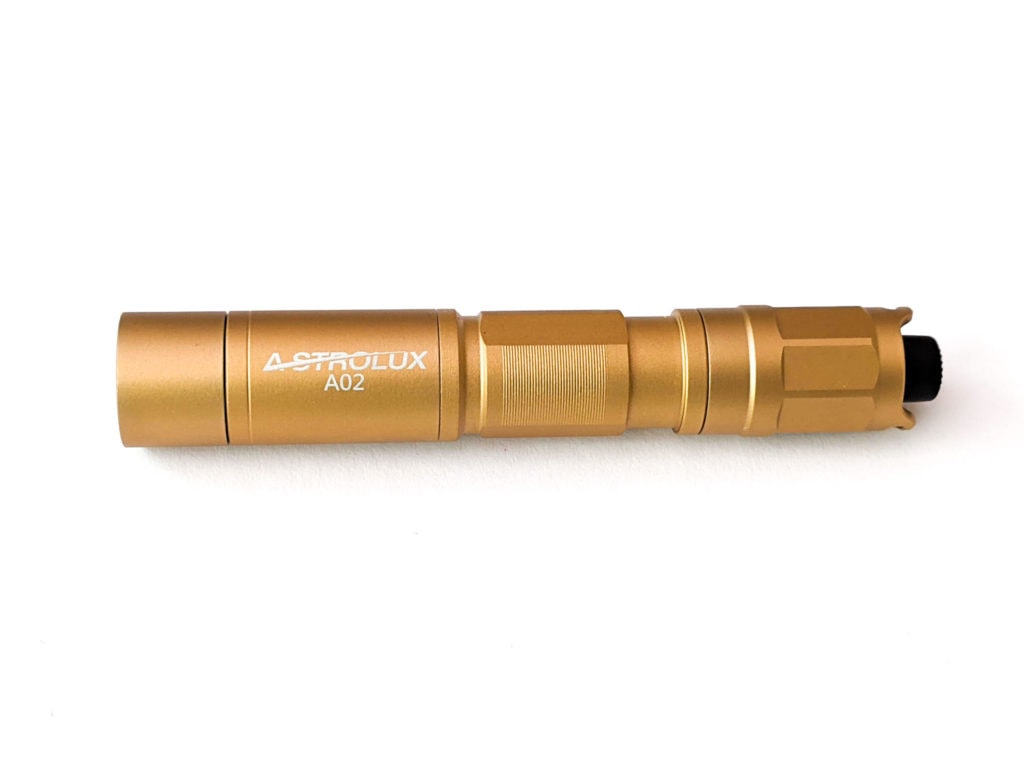
Specifications
| Brand/model | Astrolux A02 |
|---|---|
| LED | SST-20 4000K |
| Lumens | 378 lm |
| Beam intensity | 2,000 cd / 89 meters |
| Battery config. | 1*AAA / 10440 |
| Material | Aluminum |
| Modes | 3 |
| Blinkies | N/A |
| Reflector | TIR |
| Waterproof | IP67 |
| Review date | December 2020 |
INTRODUCTION:
Astrolux is Banggood’s brand and as well as producing monster lights with km of throw (like the MF05), they also produce a range of more practical EDC and keychain flashlights. Astrolux has 2 keychain lights that take AAA-sized cells: the A01 and the A02 (this one). Whilst the A01 only takes AAA cells (1.2 to 1.5V), the A02 takes either AAA cells or their li-ion counterpart.
The Astrolux A02 comes with an SST-20 LED in either 4000K (neutral white) or 6500K (cool white) color temperature. It also comes in 4 colours: black, grey, green or yellow. I picked the neutral white version in yellow.
Package quality.
The A02 comes in a printed card box, with a cutout so you can see the plastic insert. The packaging looks like the flashlight could be sold in a brick and mortar store. There’s also a label with the LED CCT, which is handy as it’s easy to forget between ordering from China and the light being sent halfway across the world.
In the box you get:
- Astrolux A02
- Pocket clip
- 2 spare O rings
The A02 doesn’t seem to come with a manual but the back of the packaging tells you all you need to know.
No cell is provided with the A02, so you have to provide your own: either AAA or li-ion 10440.
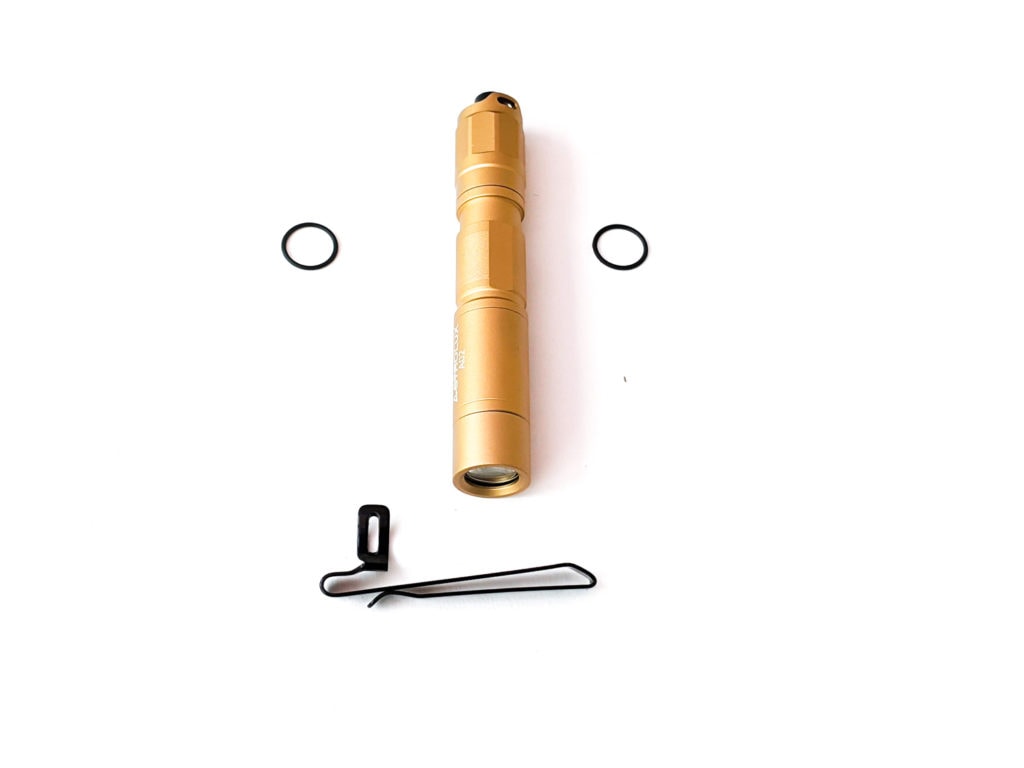
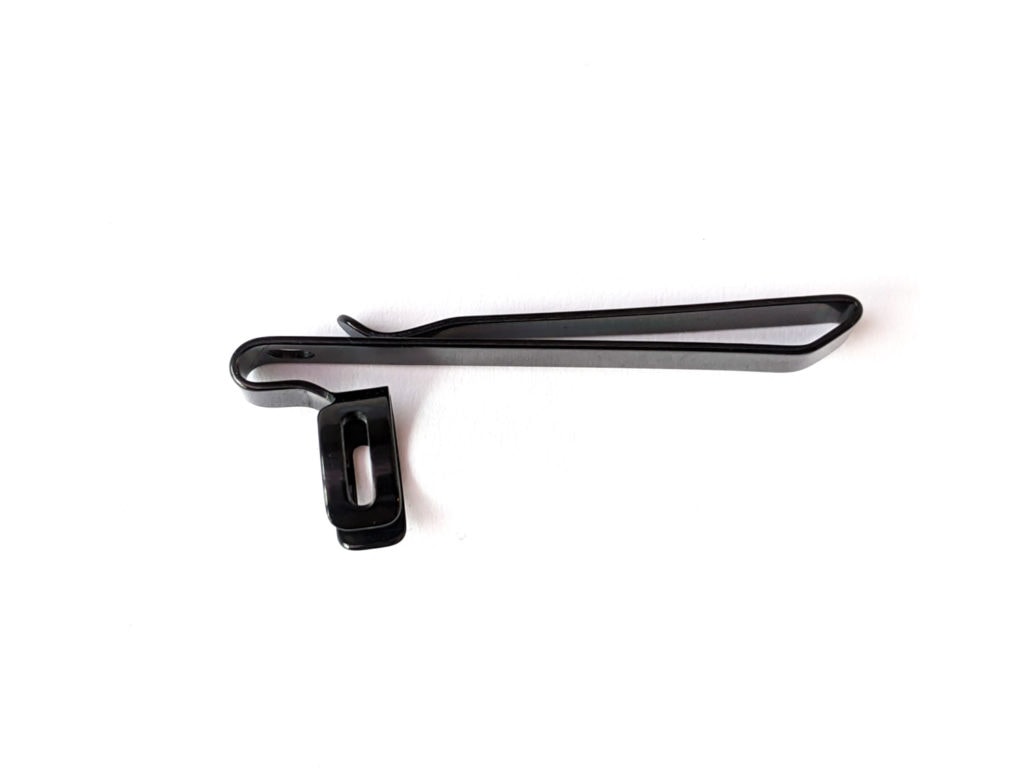
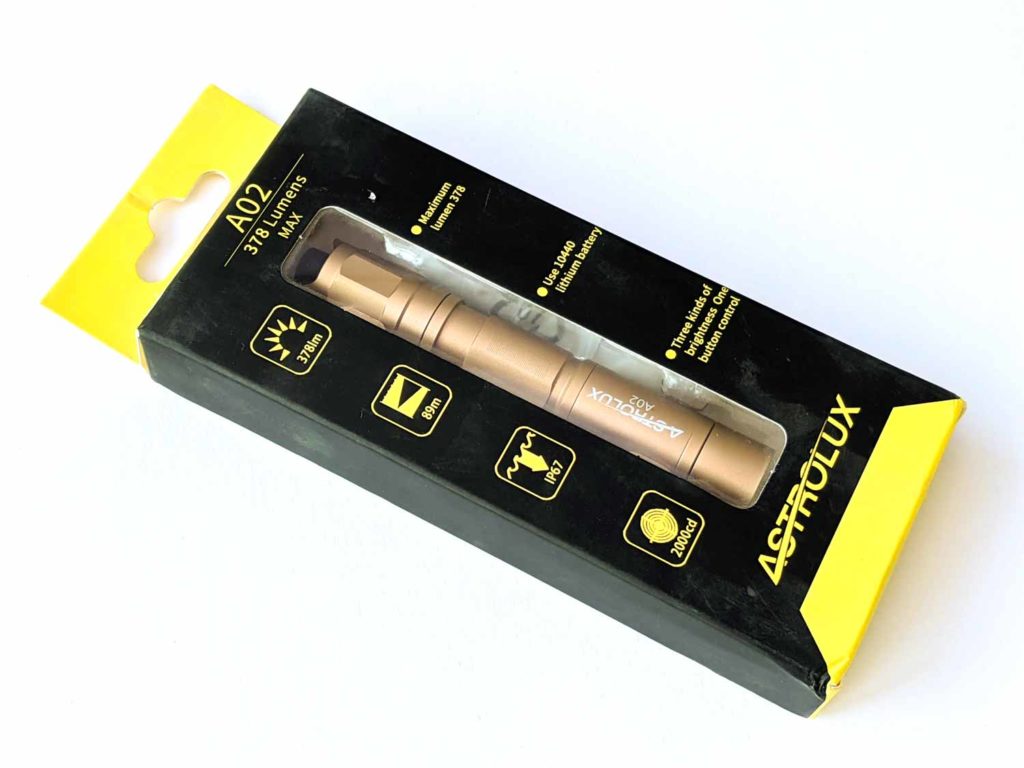
Handling of the light
The A02 feels solidly built. The light is fairly round and might roll off a table if it weren’t for the pocket clip.
The switch is a physical reverse clicky. That means you can quickly switch modes while it’s on with a partial press. The switch protrudes quite a bit, which makes it easy to find and use in the dark. It also means it won’t tail stand, though not many keychain lights do.
The clip is removable but be careful not to scratch the anodising off the light if you keep removing it. The clip only fits on 1 way (attached near the tail) but It’s a 2-way clip, so can be pocket carried either way. The 2-way clip also means you can use it as a cap light. The clip attaches well and shouldn’t come off accidentally.
Although it’s slip and lightweight, it’s quite long for an AAA light, being longer than a couple of AA lights I have. It easily fits in a pocket but despite A02 being advertised as a keychain light, I think it’s a bit long to go on a set of keys.
There’s holes on either side of the tail switch to attach either a split ring or a lanyard. Neither of these come with the light but there’s a good chance you have enough anyway.
There’s no magnet and you wouldn’t be able to add one to the tail cap anyway, as the switch is in the way. The only way to add a magnet would be on the clip, held on with heat shrink.
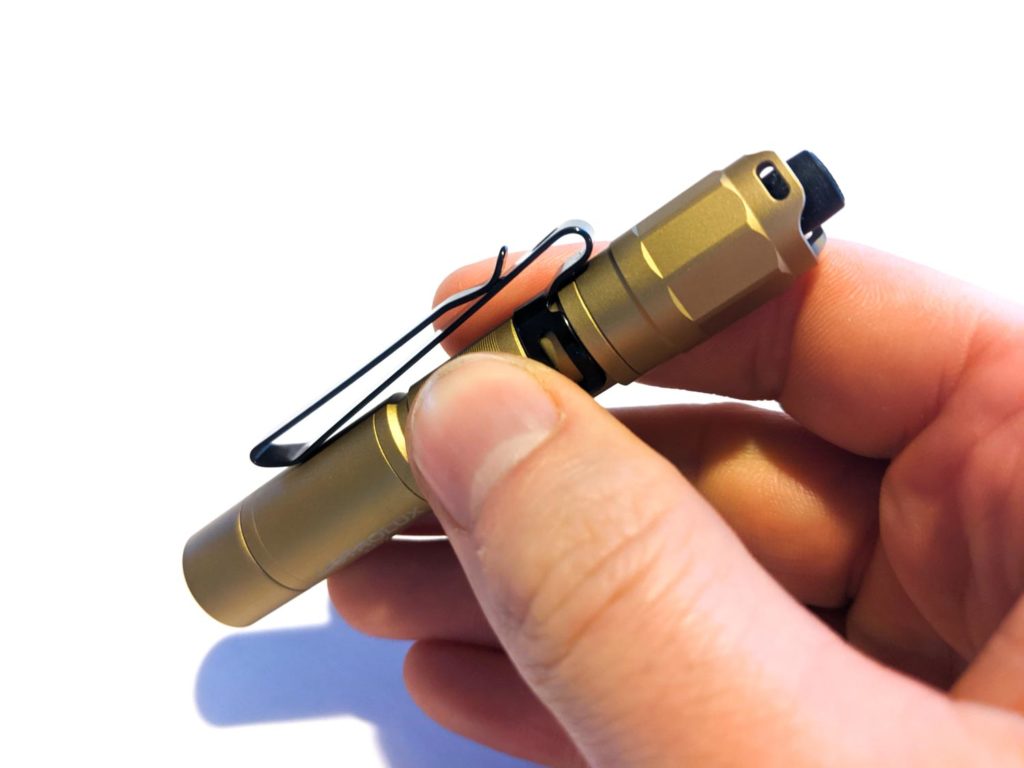
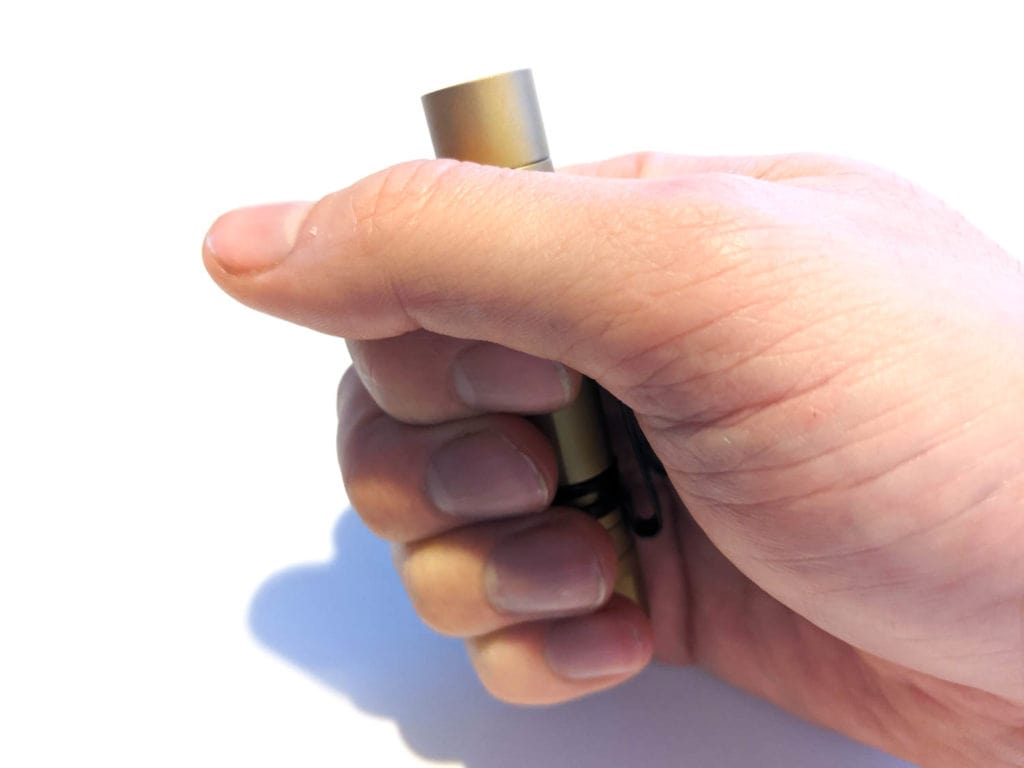
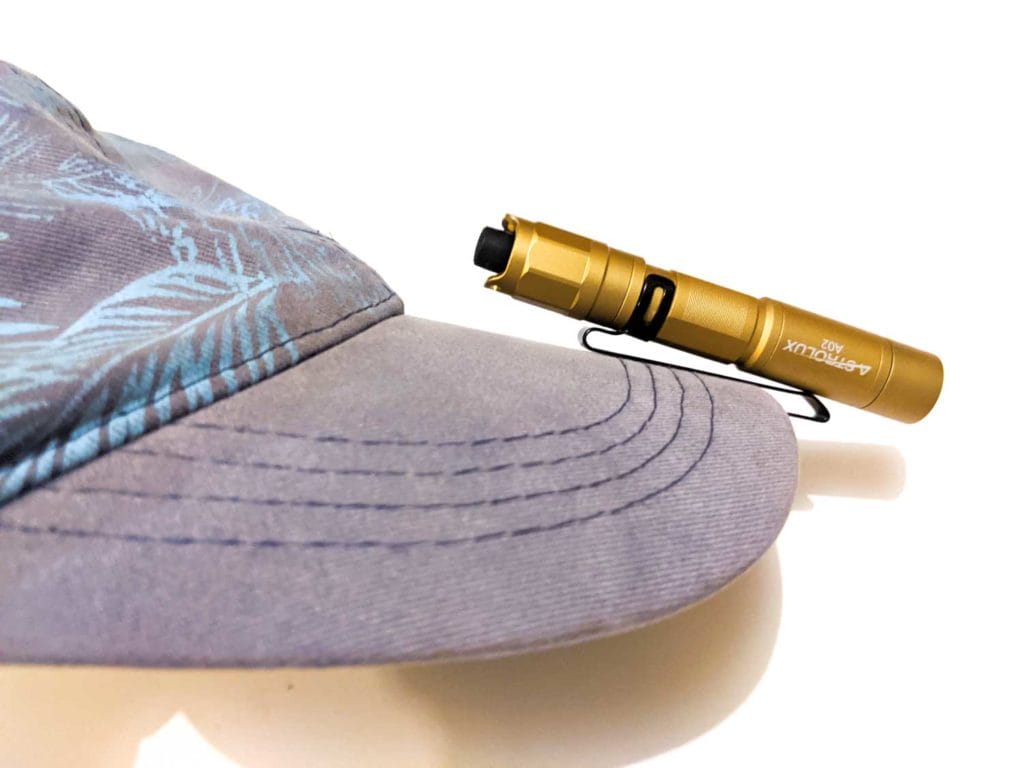
Build Quality, and Warranty
There’s a little knurling on the body for grip but being a keychain light not much is needed. The tail cap is easy to grip and twist off, due to the indentations.
The A02 is standard aluminum (Aerospace Aluminum Alloy III Hard Anodised) and comes with a matt anodisation. The threads are not anodised, which is fine but they don’t feel quite as nicely cut as some other lights I have.
Astrolux advertises the A02 as having overcharging protection, short circuit protection, and reverse connected protection. There’s no charging circuit, so I’m not sure how the light would have over charging protection. I’m not sure what short circuit protection would do either and I didn’t test the reverse polarity protection.
Astrolux says “Warranty Guaranteed”. There’s no details of this so I assume Banggood’s standard returns policy applies: full refund if returned within 7 days or full refund minus shipping if returned within 30 days, for any reason. Bangood have a 180 day warranty for quality issues.
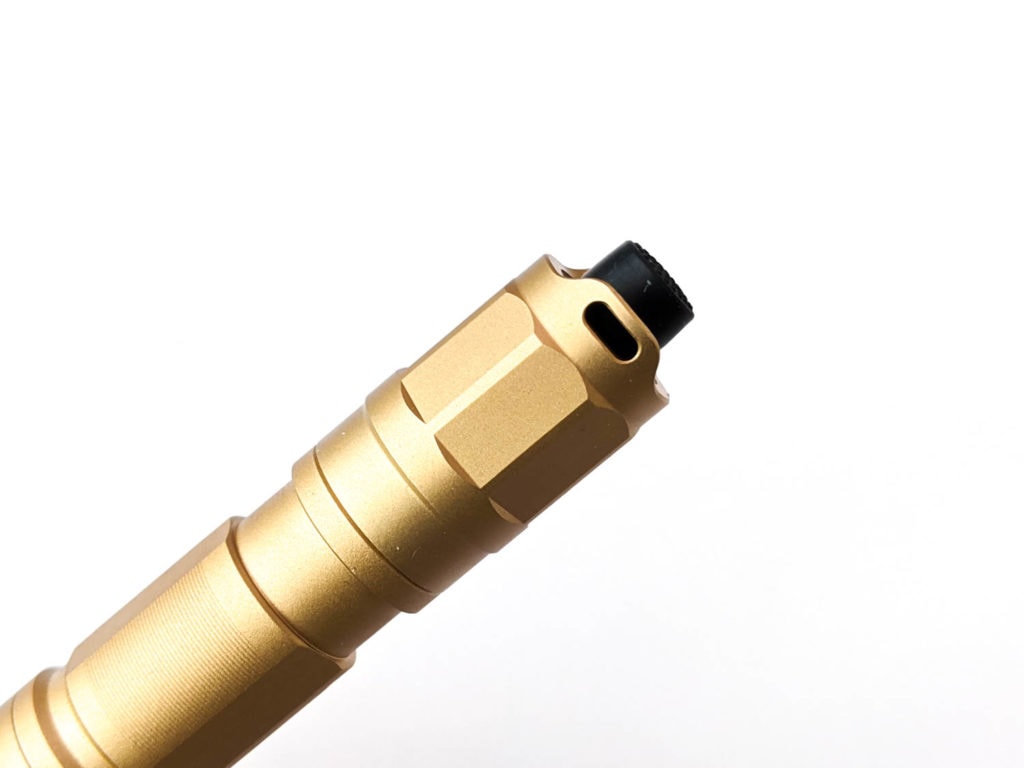
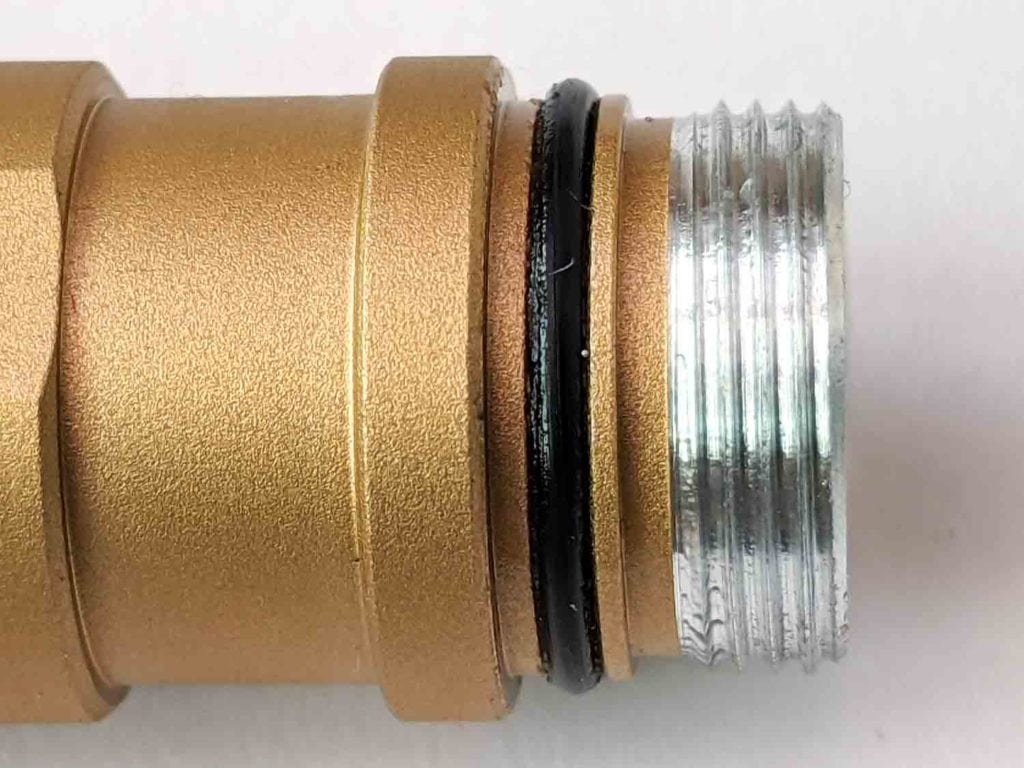

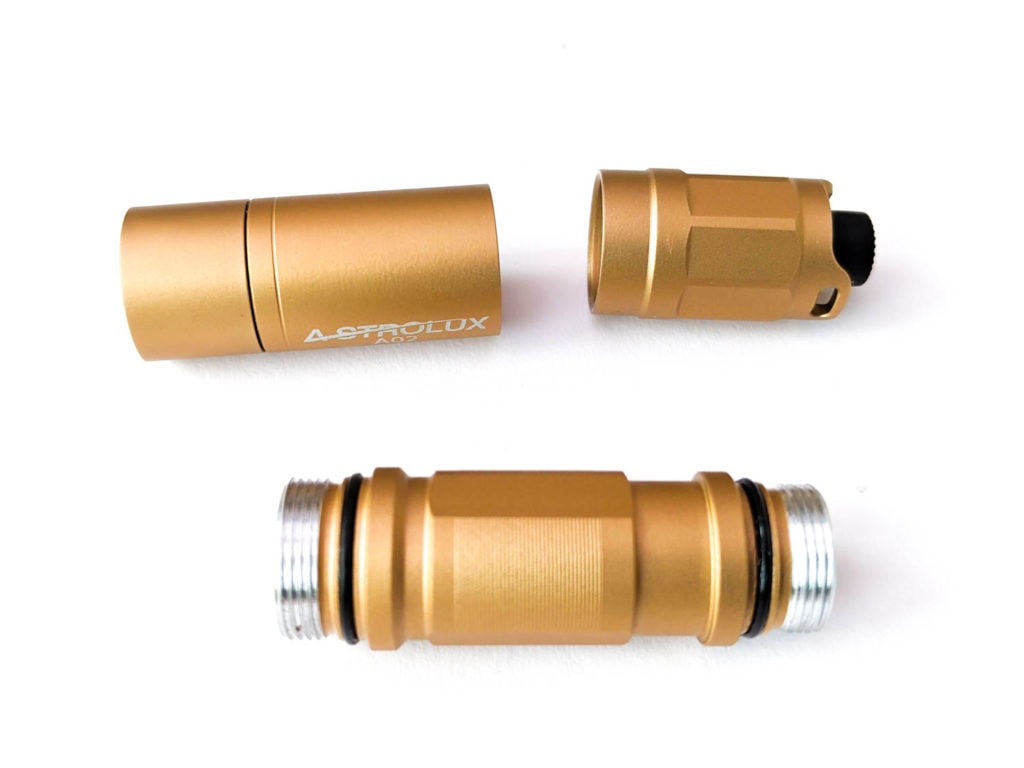
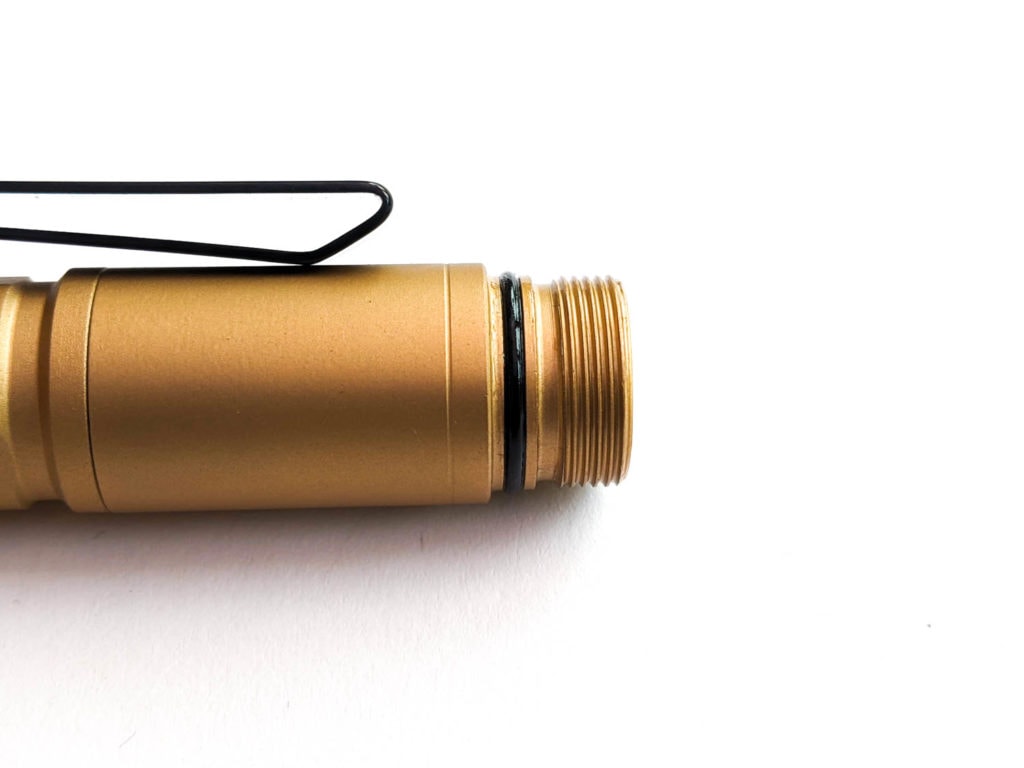
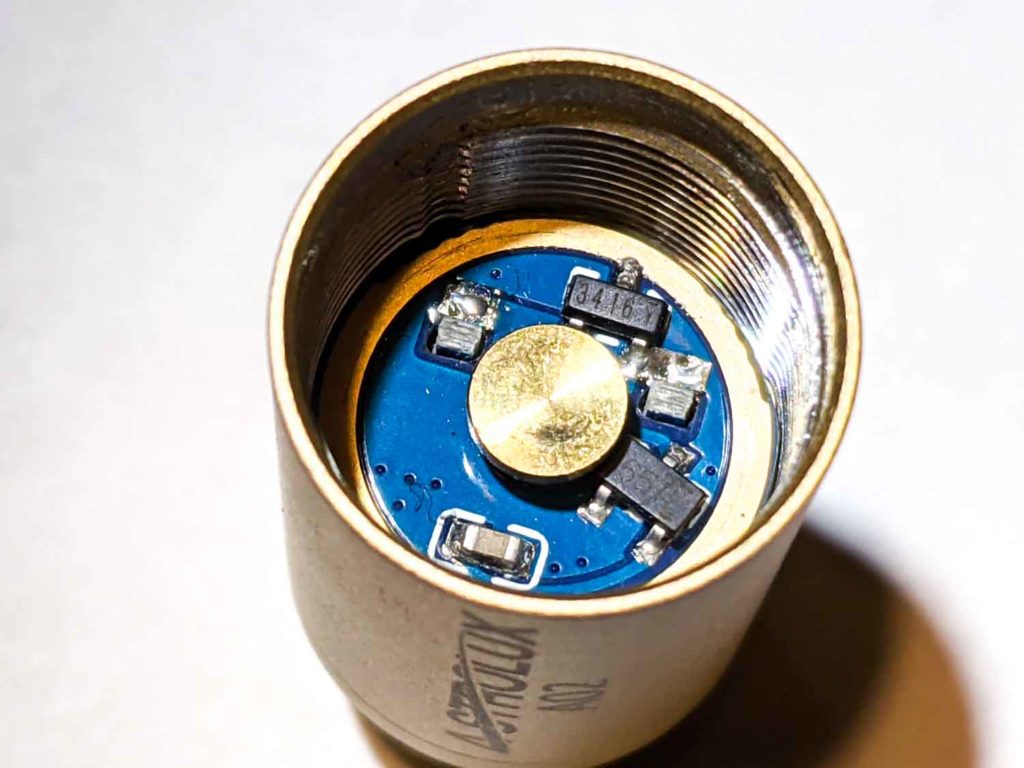
LED, LENS, BEZEL, AND REFLECTOR
The Astrolux A02 has a lovely 4000K SST-20. This is advertised as “High CRI” but there’s no details of how high the CRI is. The SST-20 has a nice tint but is slightly greener than my D4v2 with 4000K XP-L HI.
The A02 uses a TIR optic, rather than a reflector. This throws as much as a reflector would but means there’s a smooth graduation between spot and spill. Overall the A02 has a very nice beam.
You can get the A02 with a 6500K cool white LED instead if that’s your preference.
The SST-20 LED is a 3V LED in a 3535 size, so the LED could be swapped with something like a CREE XP-G2 or Nichia 219B. At under 400 lumens. The SST-20 isn’t driven very hard in the A02. In a bigger host, the SST-20 can take upwards of 5A and output 800lm.
The beam profile is about what you’d expect from an AAA sized light.
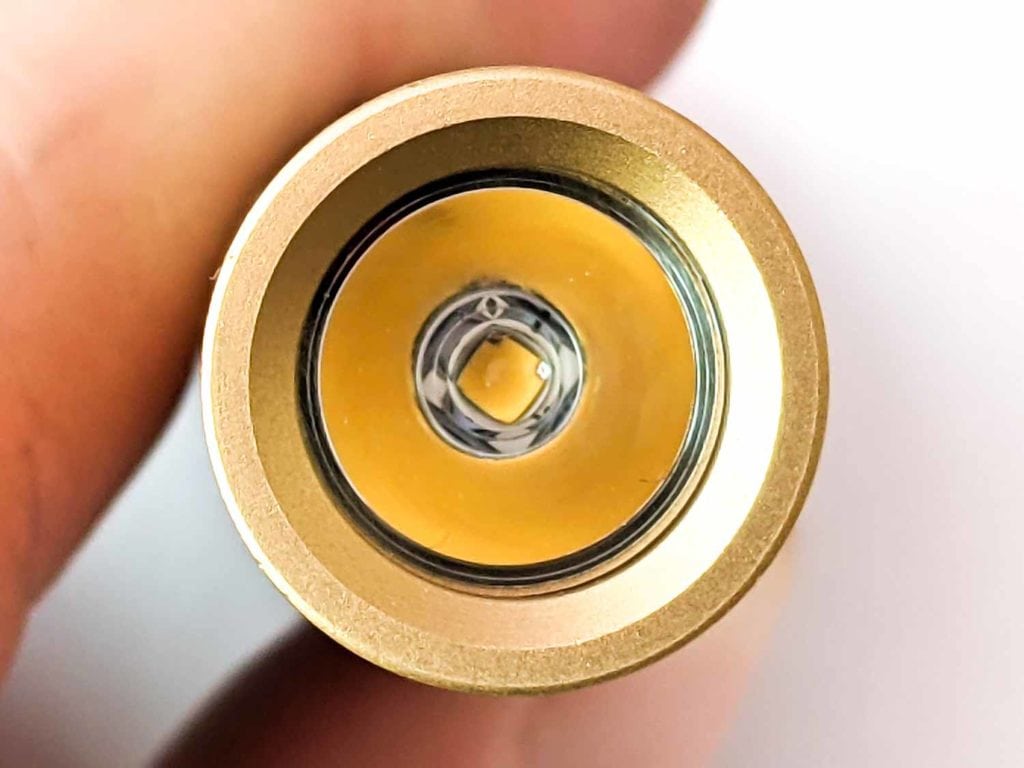
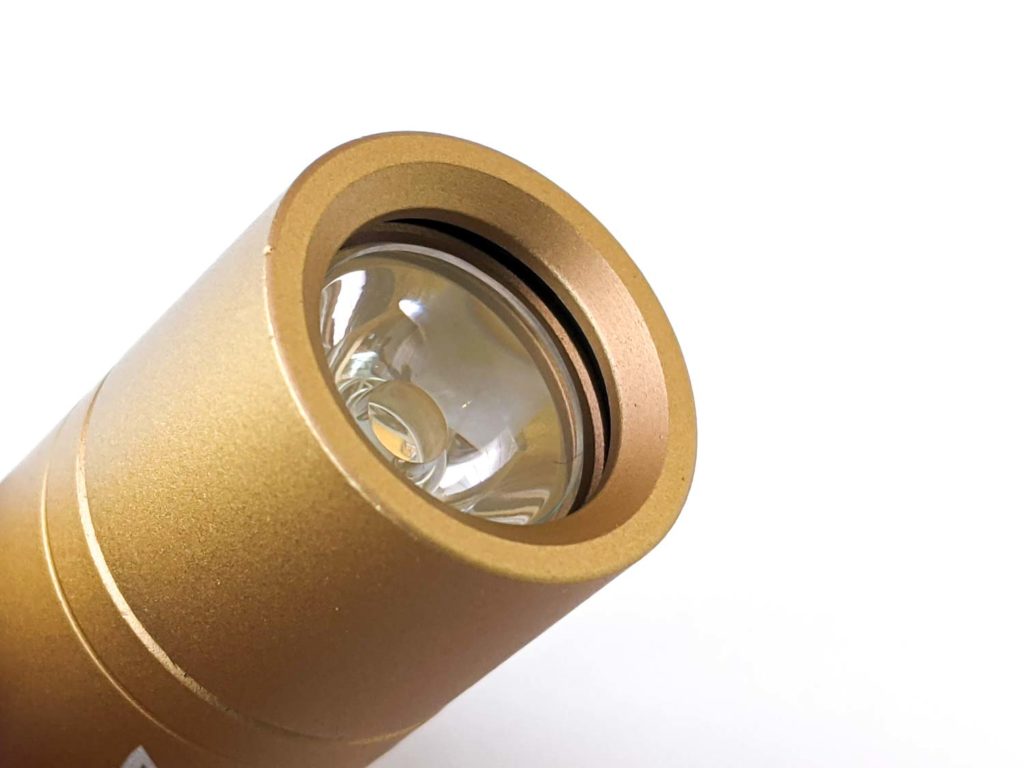
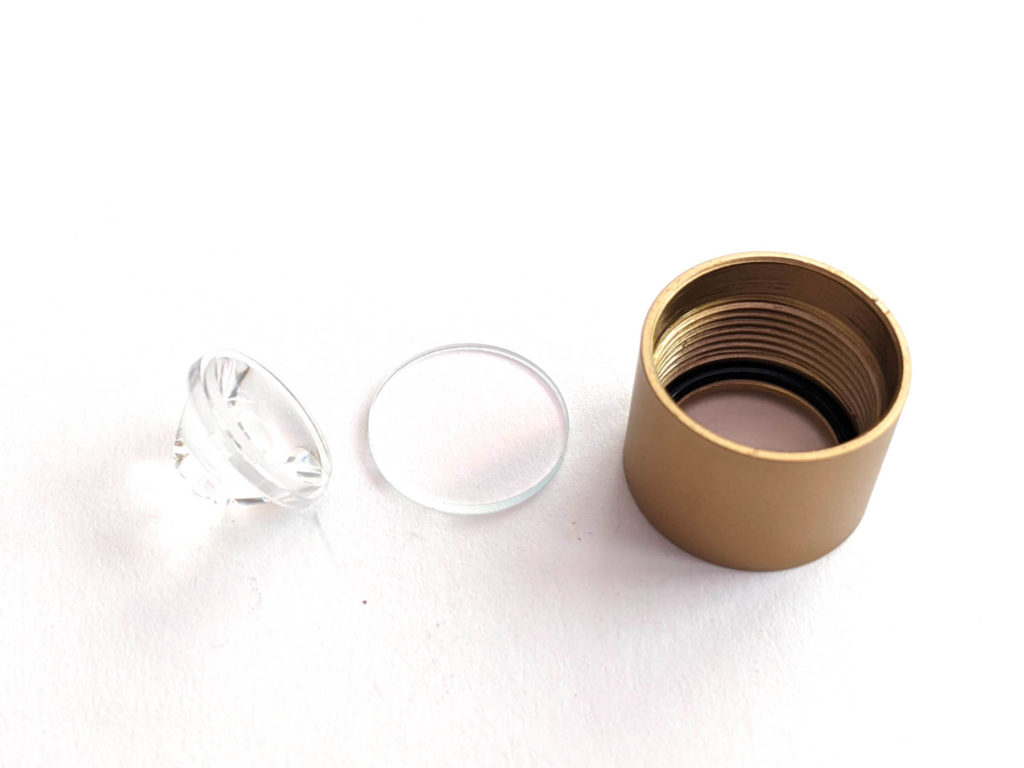
Dimensions
- Length: 9.42 cm / 3.71 inches
- Head diameter: 1.54 cm / 0.60 inches
- Body diameter: 1.44 cm / 0.56 inches
Weight:
- With AAA cell: 41 grams / 1.4 oz
- With 10440 cell: 38 grams / 1.3 oz
- Without cell: 28 grams / 1.0 oz
Small Flashlight Size comparison
Here’s the Astrolux A02 next to various other small lights.
From left to right and from shortest to longest: Thrunite Ti3 (AAA), Zebralight H53w (AA), SingFire SF-348 (AAA), Thorfire TK05 (AA), Astrolux A02 (AAA), Cheap zoomie (AA), Emisar D4v2 (18650).
I then found a couple more lights I’d left around the house. From left to right again: Lumintop GT Nano, Imalent LD10, Astrolux A02.
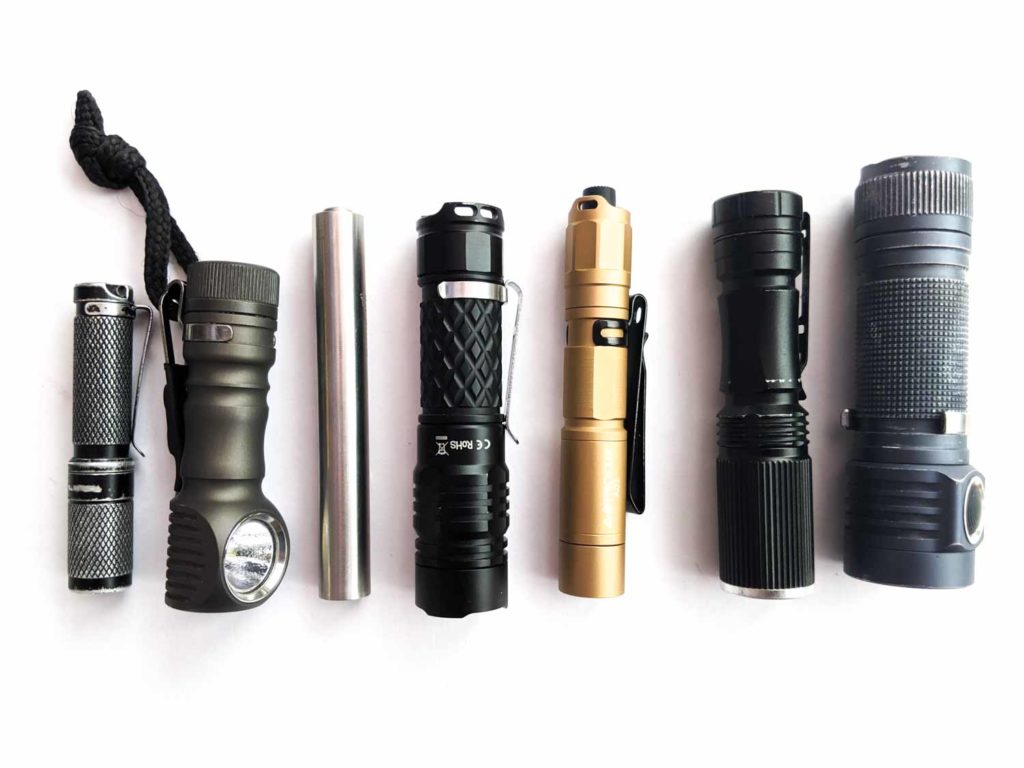
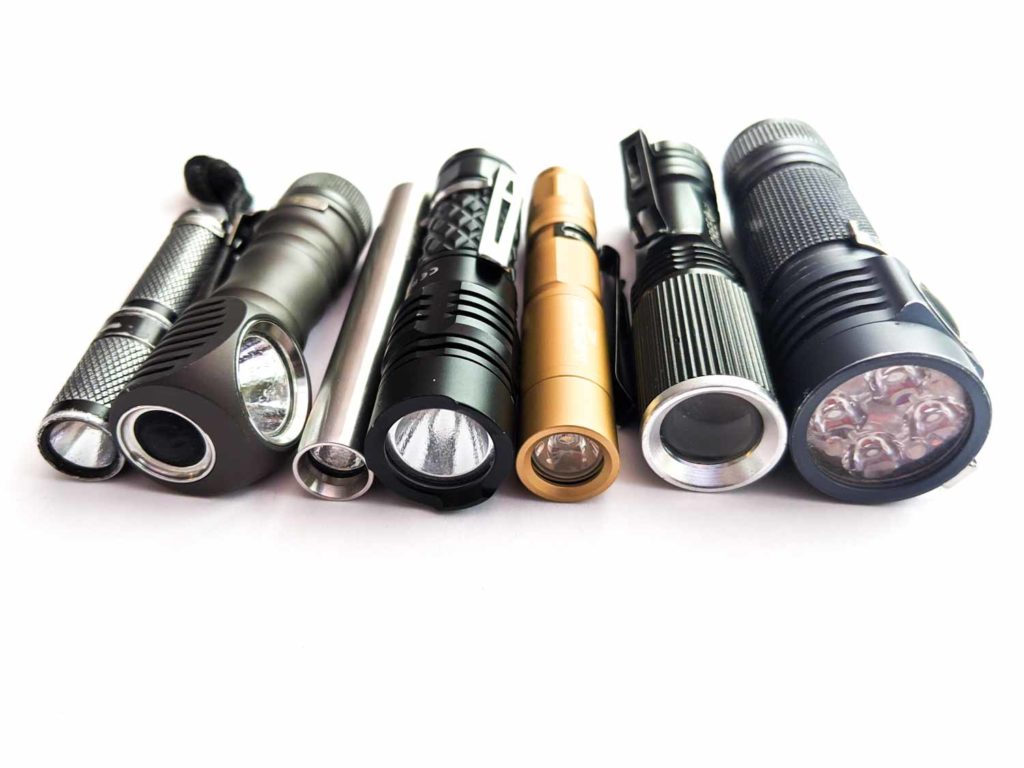
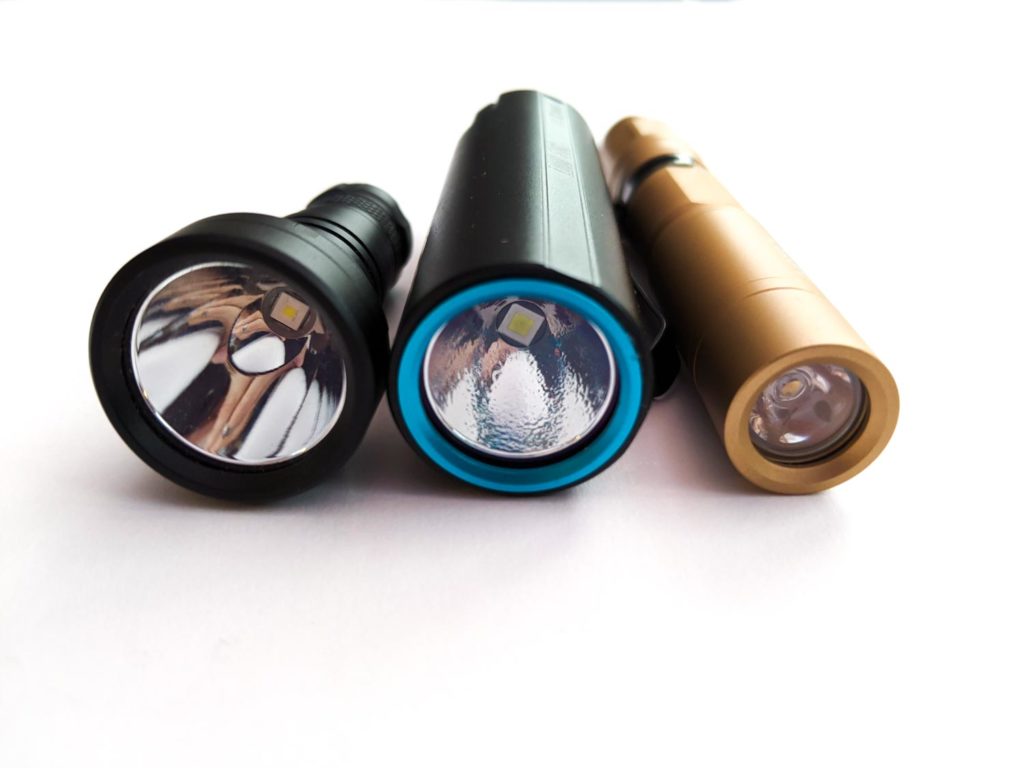
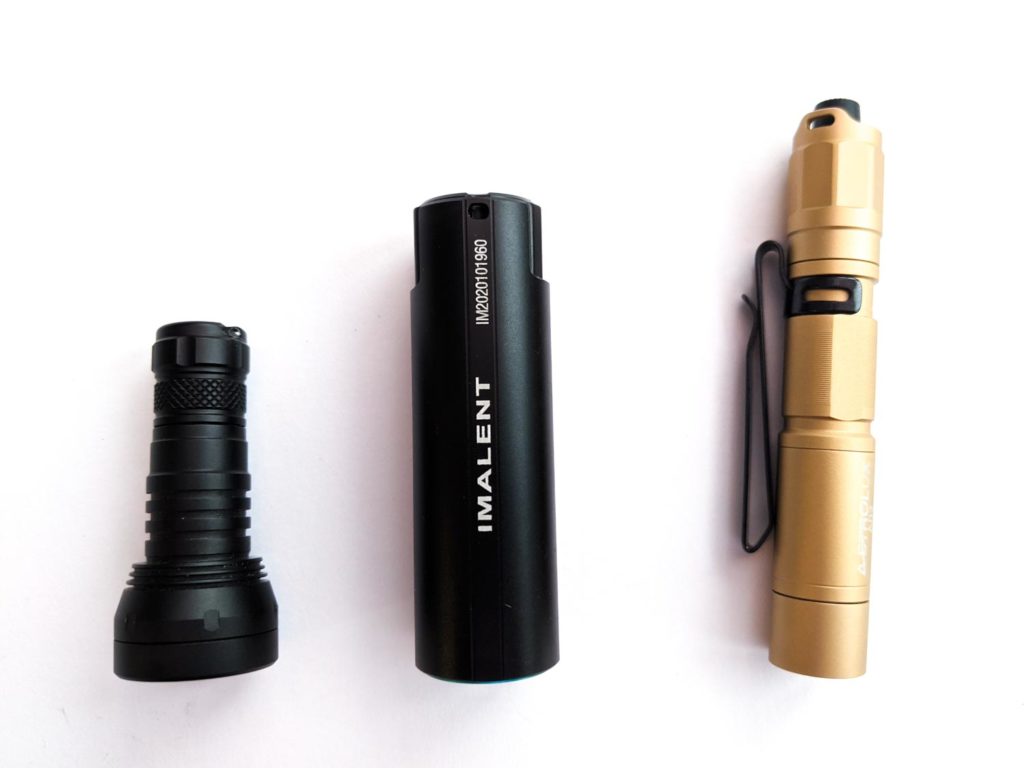
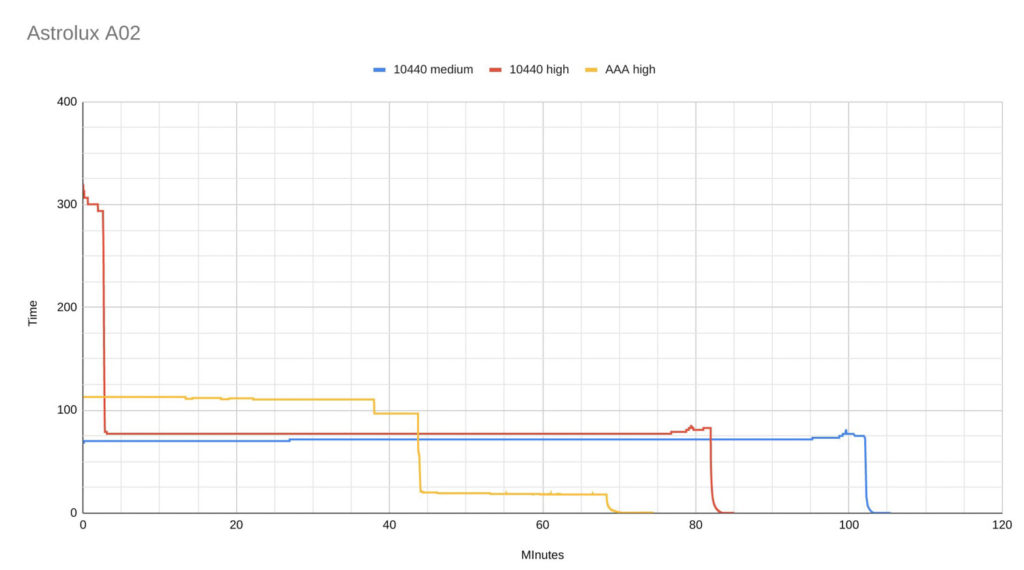
Driver & User Interface:
First, the good news. The A02 has a buck-boost constant current driver. That means it can take the 1.2V from an AAA cell and boost it to the 3V the cell needs. It also means any excess voltage from a li-ion cell above 3V is converted into current, instead of burnt off as heat. This means the A02 is versatile and should be very efficient. Having a boost driver means the light won’t dim as the cell starts to get empty either.
The A02 has 3 modes, which is plenty for a keychain light. The modes are fairly well spaced, at 0.6lm, 90lm and 378lm. The low moonlight mode is great for around the house at night, the medium mode will last well over an hour and the high mode is very bright for a small light.
I can’t detect PWM on any of the modes with my camera, which is a sign that it’s using a constant current driver.
The A02 flashes briefly as a low voltage warning but only when the cell is very low. The light will keep working though and drain a cell. 5 minutes after the low voltage warning the li-ion cell measured 1.43V! This will likely reduce the lifetime of the cell, so watch out for the low voltage blink.
Now, the not so good news: the UI.
The forward clicky switch is used to turn on and off the light. If you turn it off and on quickly (e.g. with a half-press of the switch) then the light will switch modes from low to medium, to high, then back to low.
The issue with the A02 is the mode memory. Mode memory normally means a flashlight will turn on with the last used mode if it’s been off for a while or will go onto the next mode if it was on just a second or 2 ago. The A02 always seems to go on to the next mode. That means if you last used it on low yesterday then it will be on medium when you turn it on today. This is unfortunate, as it means 2 thirds of the time you have to cycle through the other 2 modes to get to the mode you want. This is something I’d expect from a cheap zoomie light, rather than something from Astrolux.
Hopefully, Astrolux will address this in a future update and make the A02 stay on the same mode if you turn it on after it’s been off for a few seconds. When using the A02, I’ve tried to get into the habit of leaving it on high after using it, so it always turns on in the low mode.
There don’t seem to be any hidden modes, strobes or configuration settings for the driver, just the basic low, medium, and high.
As the threads aren’t anodised, you can’t do the “quarter twist to lock out” that you can on many lights.
Batteries & Charging
As mentioned, the A02 takes either AAA cells or li-ion. It can take 1.5V alkaline cells but these have low energy density and are known as alkaleaks by some people, so should only be used in emergency. 1.2V NiMh cells work well, as do 3.7V 10440 li-ion cells.
Performance
All lux measurements are from my home made integrating box and Android lux meter (Moto Z3 Play), indoors and without any active cooling. Relative measurements will be accurate but absolute values may be +/-15% due to my setup. Current readings were taken with a Precision Gold PG10B DMM.
The A02 doesn’t come with a cell. The claimed lumens from Astrolux are from a 10440 cell, which many people won’t have and may be deceptive. I’ve done tests with a standard rechargeable AAA (NiMh IKEA Ladda, 900mAh) and a less common 10440 li-ion (Vapcell 320mAh, 3A max discharge).
Amp measurement
I didn’t use the low range current range on my DMM due to the risks of the next mode memory making it jump to a high current, killing the DMM.
1.2V AAA cell (at 1.31V)
- Low: 0.03A
- Med: 0.10A
- High: 1.00A
10440 cell (at 4.17V)
- Low: 0.00A (probably close to 0.005A)
- Med: 0.19A
- High: 1.01A
Runtime graph
With the li-ion cell, the A02 will hold 300 lm on high for almost 3 minutes before stepping down to about 75 lm, which it will hold steady for well over an hour. You can see the buck/boost driver at work with the very flat line. The drop down is about the same brightness as the medium mode.
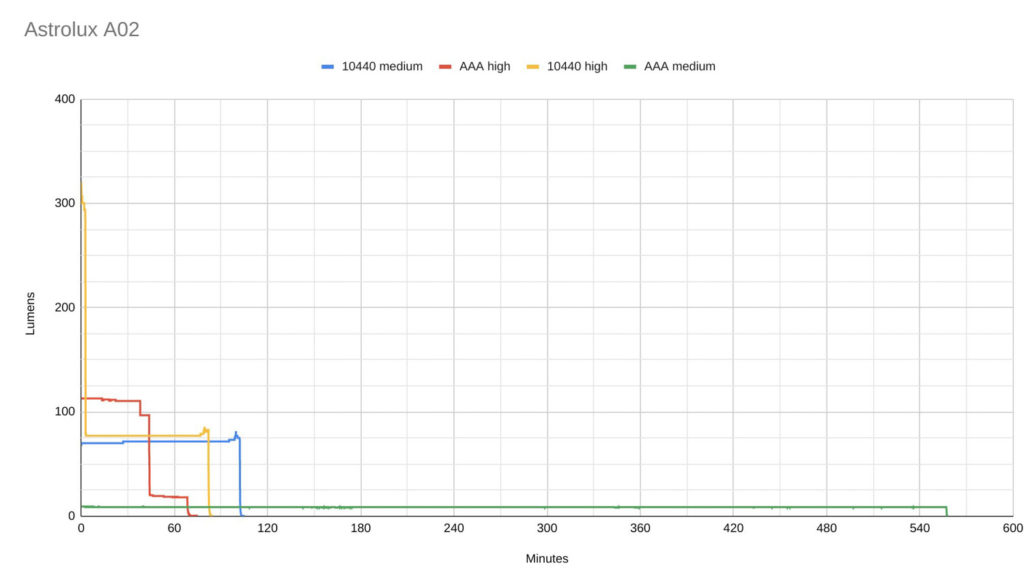

I didn’t keep an eye on the A02 and after the high run time test, the li-ion cell was at 1.43V! This isn’t great for li-ion cells.
The A02 doesn’t throttle on high when using an AAA, which means that the AAA high is actually brighter than the 10440 high for some of the time. The A02 did drop down to 20lm after 45 minutes though, presumably as the boost circuit was struggling to provide power from a low voltage.
Where the AAA cell really shines (excuse the pun) is on medium, which lasts for over 9 hours at a still-usable 9 lm, which is much longer than the 1h20 you get from a 10440.
Lumen measurements
AAA cell @ 1.31V
- Low: 0lm (it’s obviously not 0lm but it’s lower than some 1lm modes on other lights)
- Medium: 9 lm
- High: 113 lm
10440 cell @ 4.17V
- Low: 1 lm
- Medium: 70 lm
- High: 320 lm at turn on, 307 lm @ 30s
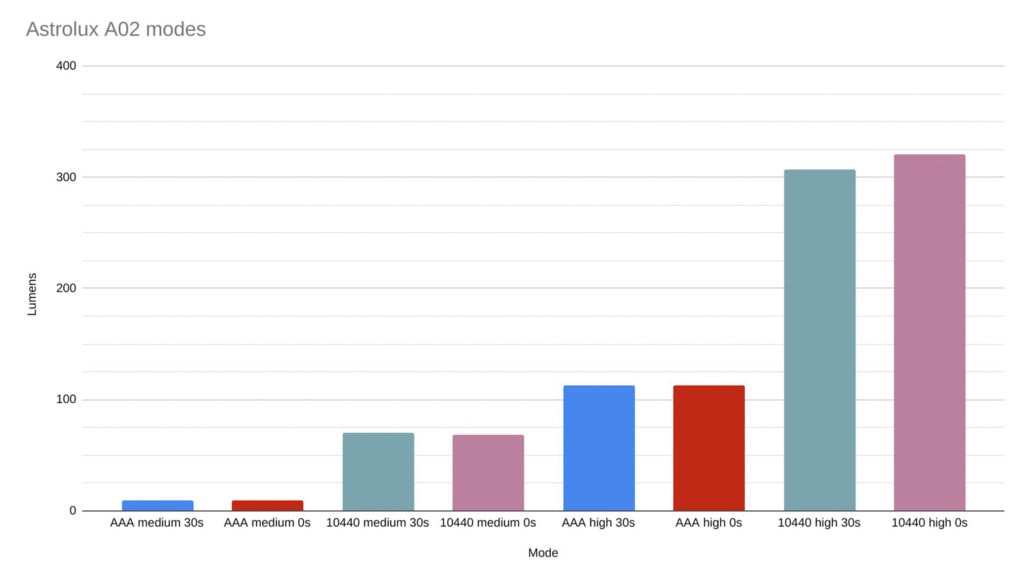
Throw numbers:
Taken at 3m
- High (AAA): 758 cd / 55m
- High (Li-ion): 2294 cd 96m
This works out to about 7cd/lm.
Beamshots
Beamshots are taken 2.5m from the wall, with the following flashlights and cells Emisar D4v2 (18650), Thorfire TK05 (AA), Thrunite Ti3 (AAA), SingFire SF-348 (AAA), Imalent LD10 (proprietary), Lumintop GT Nano (10180), Astrolux A02 (10440), Asrtrolux A02 (AAA).
With the 10440 cell, the A02 is definitely bright for its size.
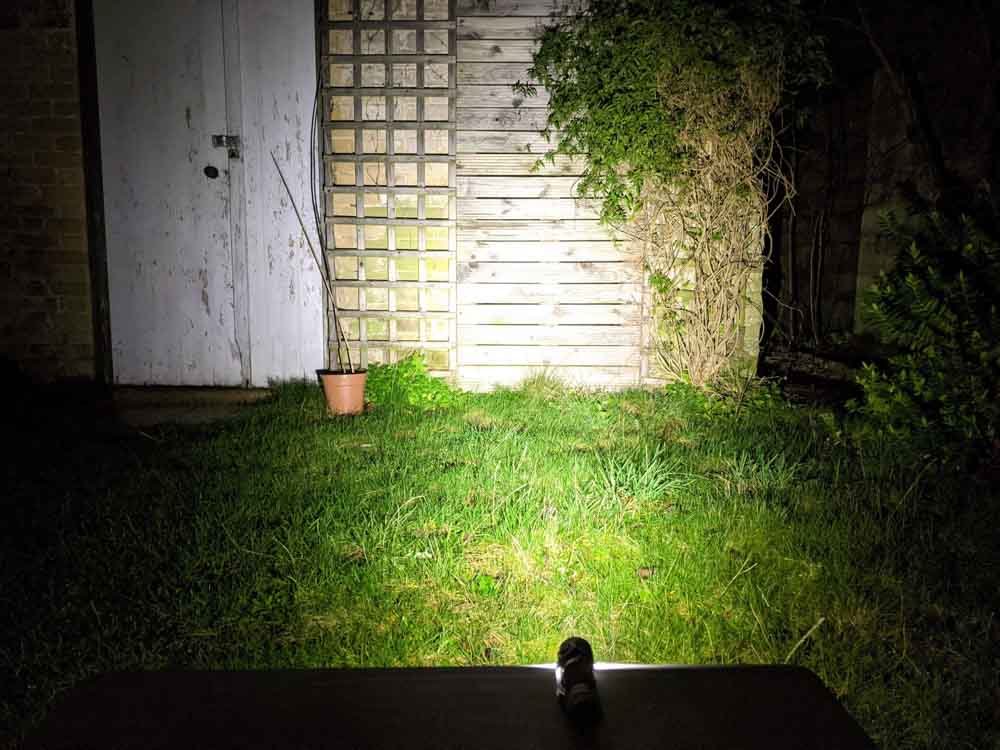
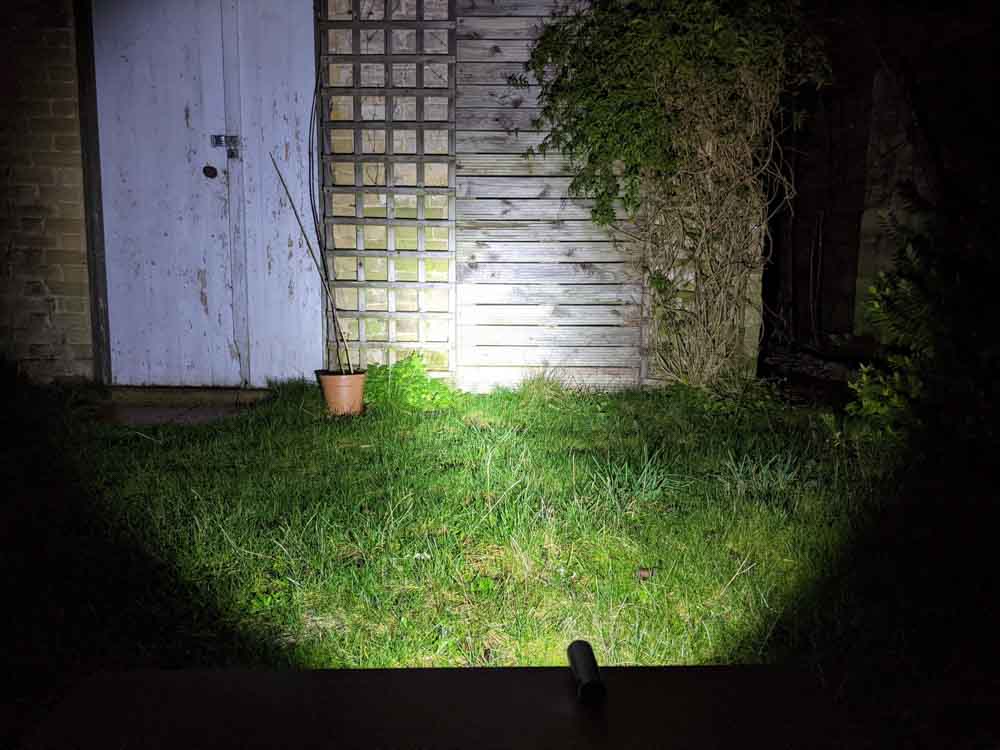
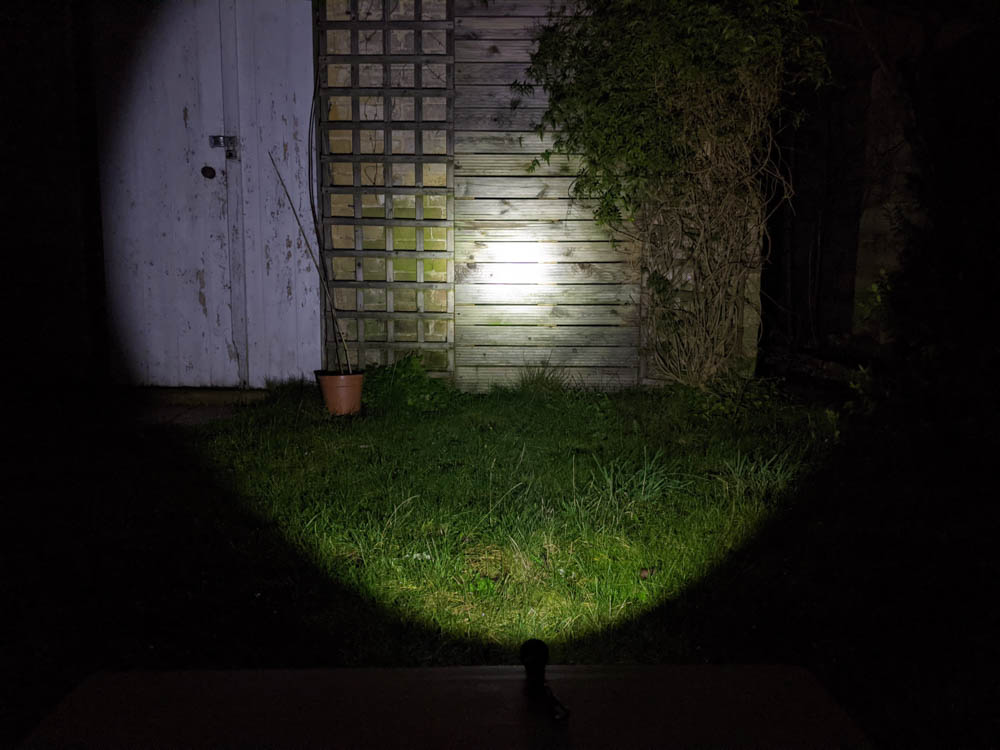
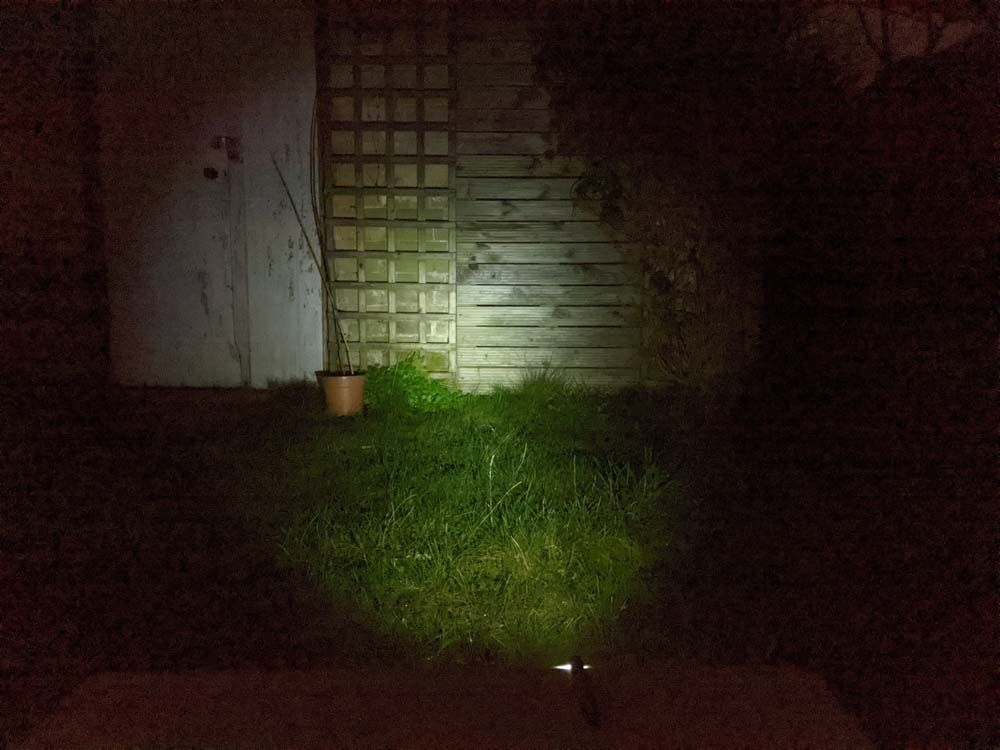
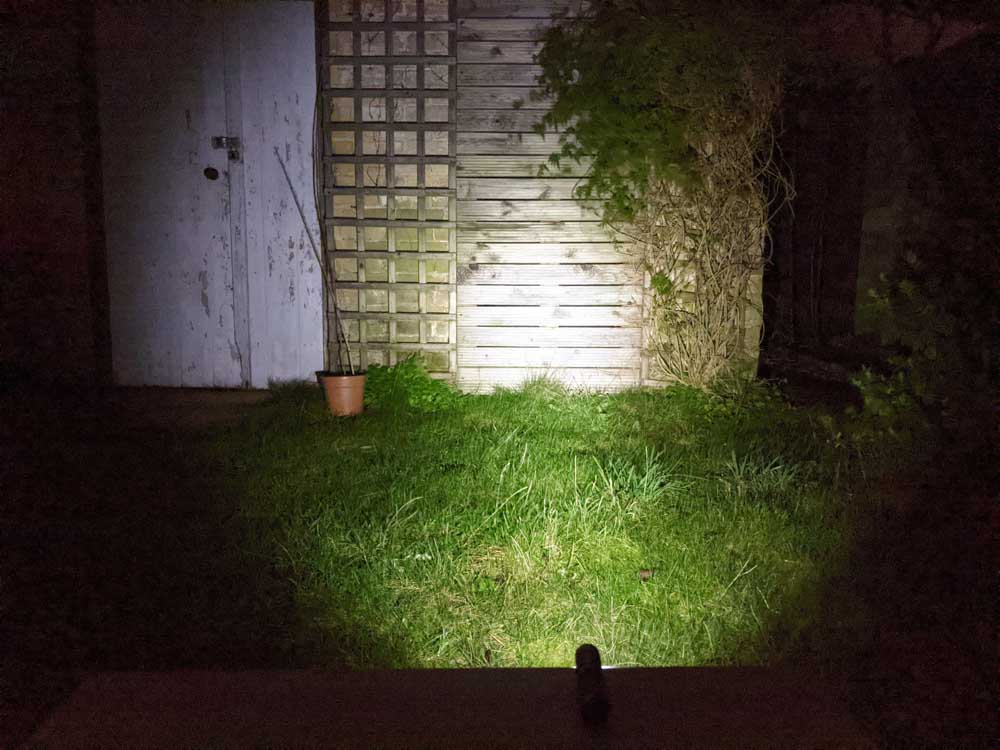
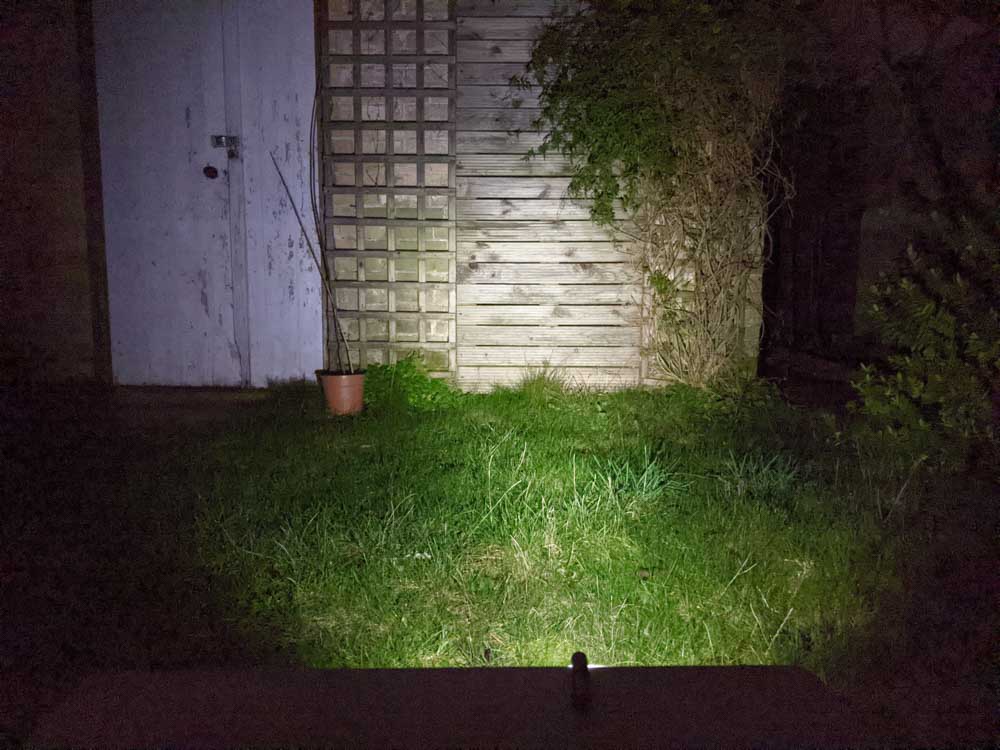
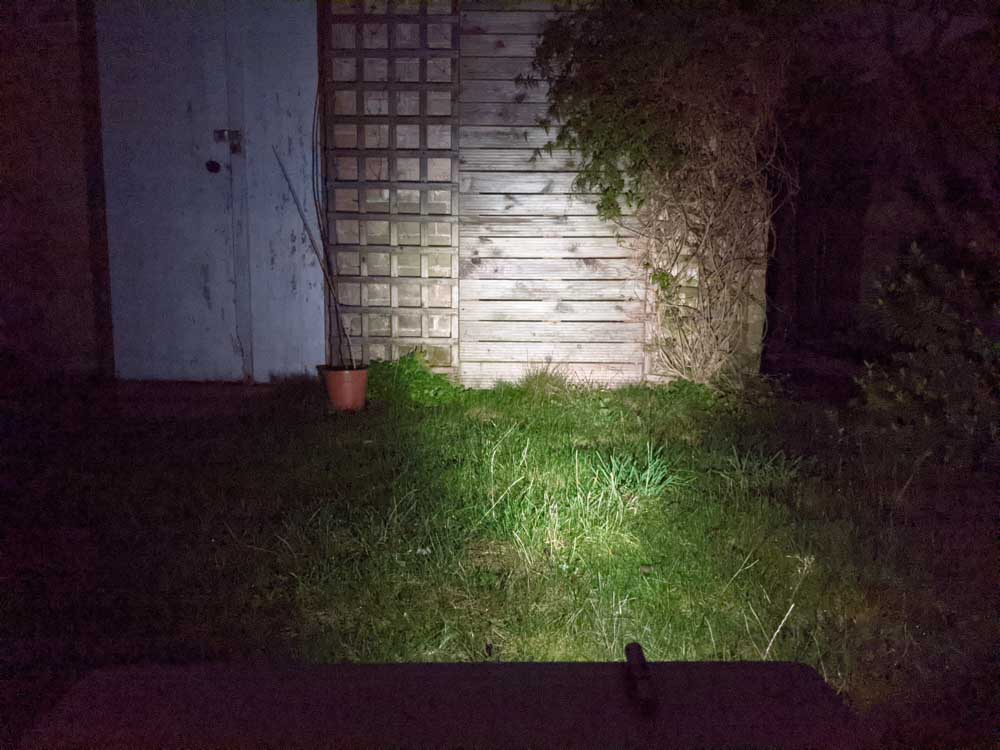
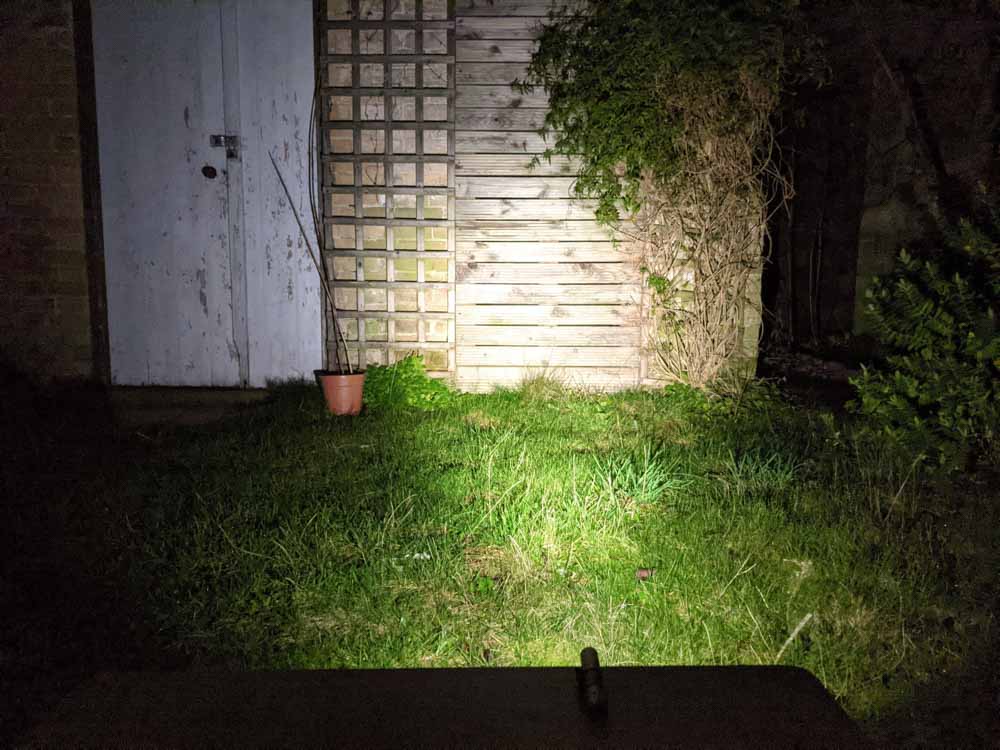
Disclaimer: we bought this flashlight with our own money. Nobody paid us to review this flashlight, nor have we been holding back on problems or defects.
OVERALL CONCLUSION
Pros
- Lovely Hi CRI 4000K LED and smooth TIR
- Well spaced modes
- Takes both AAA and li-ion cells
- 2-way clip
Cons
- Next mode memory
- No Low Voltage protection for Li-ion

4 stars: ★★★★
The A02 gets almost everything right. It has one of the nicest beams I’ve seen, good mode spacing, and pretty good build quality. For its price, I’m not sure if it can be beaten.
The A02 would be pretty much perfect if it weren’t for having to cycle modes lots of the time. I find that annoying, so for me, the A02 loses a star.
Buy your Astrolux A02 here
The Astrolux A02 is not longer available at Banggood.com. Still interested in AAA flashlights, check out our list with all the AAA flashlights we reviewed.
1lumen selects and reviews products personally. We may earn affiliate commissions through our links, which help support our testing.